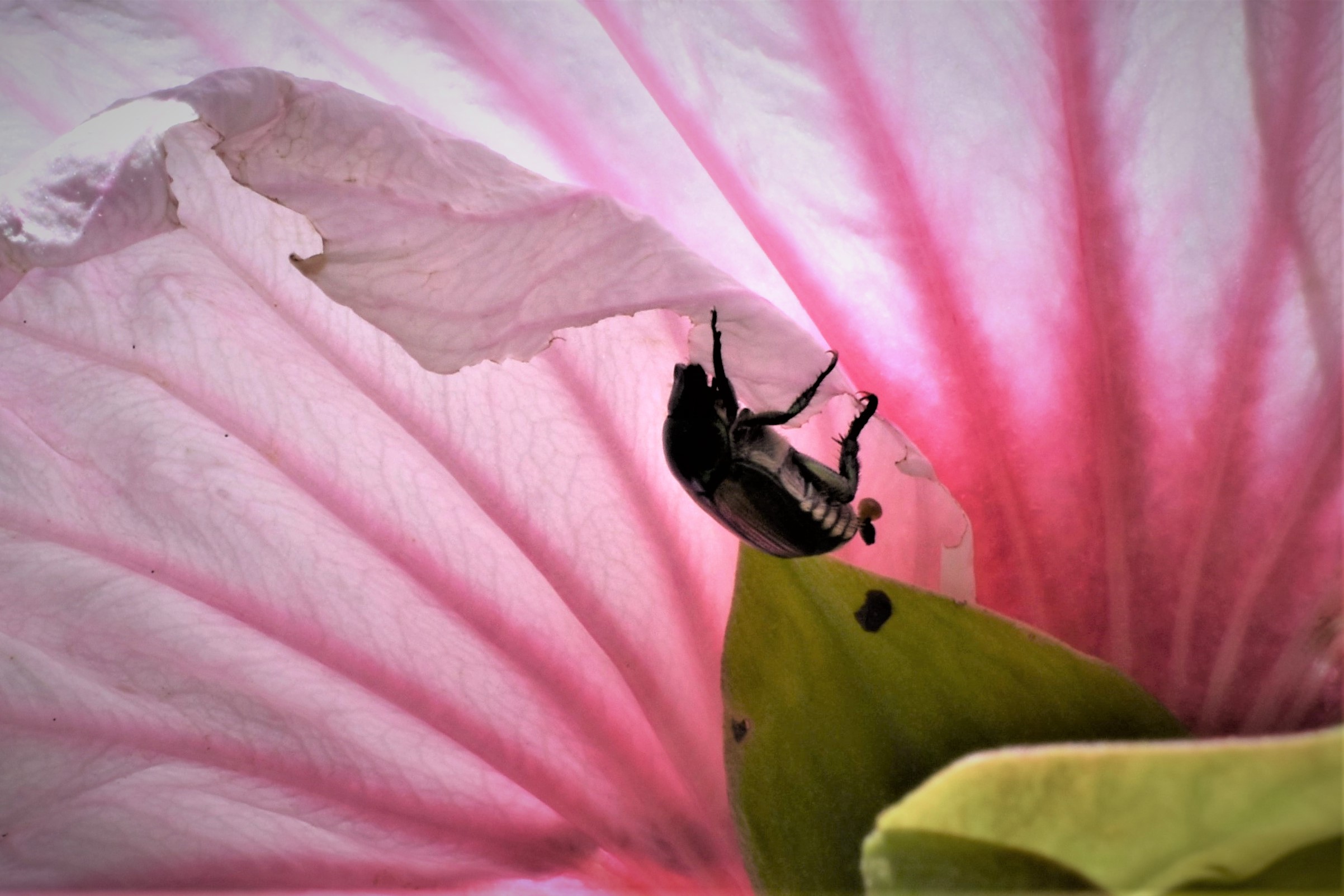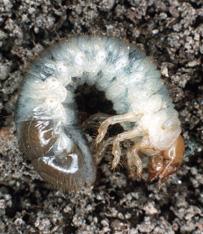By Sandra Nelson
I honestly thought that they had passed me by. Then, this happened and I knew that my time was coming….Japanese beetles had arrived.

Accidentally introduced in 1916, the Japanese beetle has become one of the challenging of the insect pests to eradicate from the home landscape. Currently found throughout much of the eastern United States, each summer the beetles seem to be expanding their range.

The distribution shown here comes from data from the U.S. Department of Agriculture’s Animal and Plant Health Inspection Service (as of 2018 for the U.S.) and the Canadian Food Inspection Agency (as of 2016 for Canada). (Graphic by Hailey Shanovich, originally published in Shanovich et al 2019, Journal of Integrated Pest Management)
Adult Japanese beetles are deceptively beautiful insects. Each about one-half inch in length, beetles have shiny, metallic green bodies that are covered by copper colored wings. They sport five tufts of white hair on each side of their bodies. and one near the top of the abdomen. Unlike many other beetles, the bodies of Japanese beetle are hard, making them inedible to birds and other predators.

Females emit a pheromone (chemical substance that triggers a response in members of the same species) that attracts males, causing the insects to congregate and subsequently mate.

Every 24 to 48 hours throughout their 30 to 45 day lifespans, females Japanese beetles lay on average five or six eggs in soil about two to four inches underneath a grassy surface.

Within 7 to 10 days, the eggs hatch and the young grubs begin feeding on grass roots.

Grubs remain at the surface level feeding until October. As temperatures cool, grubs move deeper underground where they remain until spring.
When soil temperatures reach at least 50 degrees F, the underground grubs begin to pupate. Adult beetles emerge and immediately begin feeding, mating and laying eggs.

Adult Japanese beetles as well as their larval stages are destructive pests. Voracious eaters, Japanese beetles feed on over 300 different species of plants — everything from the roots of turf grass to vegetable crops, ornamentals and natives. Groups of adults can strip a plant of its foliage overnight while grubs and their predators can destroy a lawn in days.

Knocking adult beetles into soapy water is an effective control, especially if it is done in the early mornings before they become active. Avoid the use of pheromone lures and traps since they have a tendency to draw more insects than they catch. Chemical insecticides, which are harmful to beneficial insects as well as pests, should be used sparingly since the damage caused by adult Japanese beetles is typically only aesthetic and not life threatening.

Controlling grubs in a lawn, especially a lush, well-fed lawn, can be a complex, multi-step process. Since several precisely timed chemical applications are often necessary, many people choose to call in the professionals. While harsh chemical treatments can be used, newer more ecologically sound treatments are being developed.

